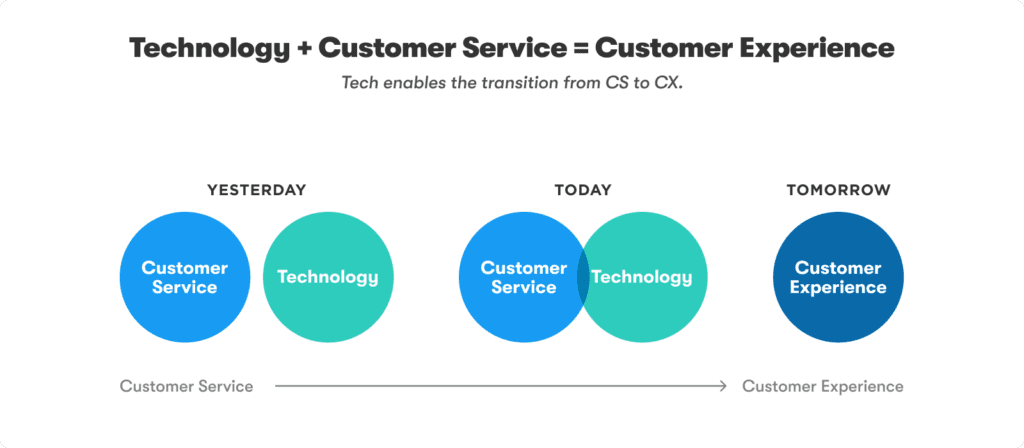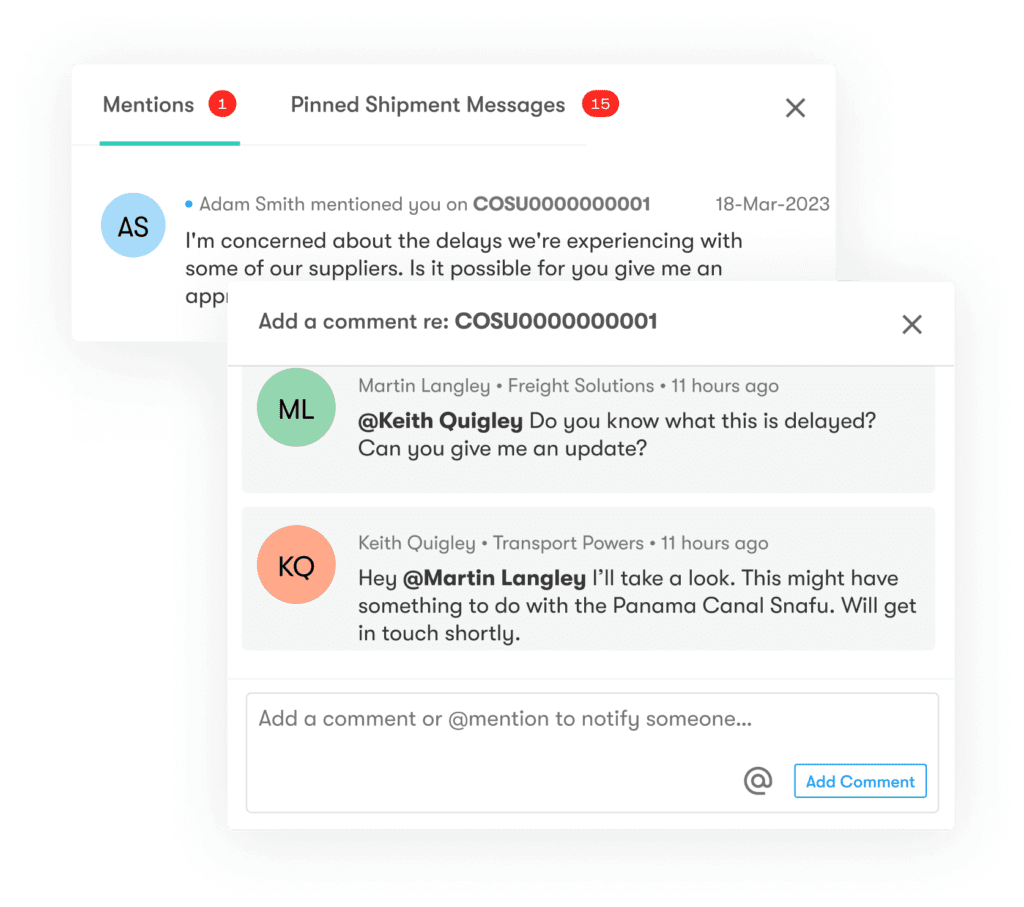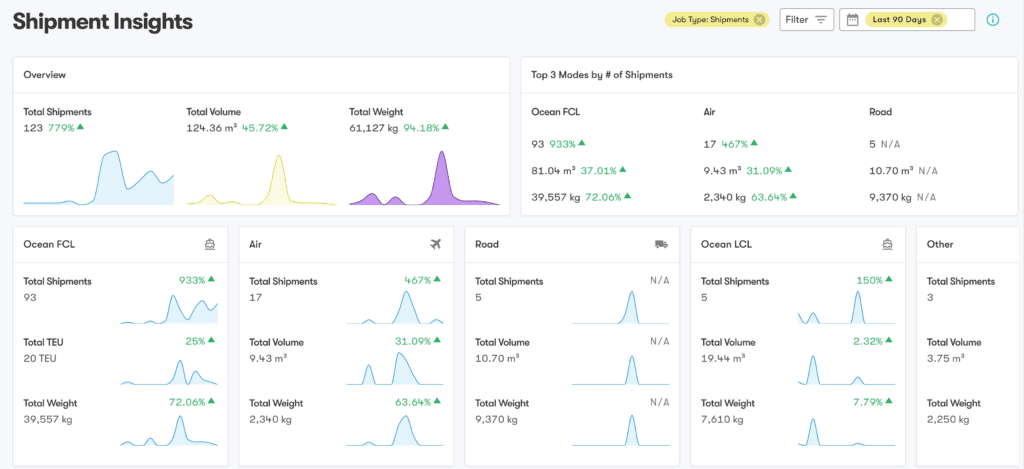In this article
As a freight forwarder, you know that customer retention and expansion are critical to the success of your business. But how can you ensure that your customers stay with you over the long term, and even grow their business with you?
The answer: Focus on becoming a strategic partner for your customers. By understanding your shippers’ individual needs and providing customized solutions, you can build a relationship of trust and collaboration that goes beyond the traditional transactional model. Let’s talk about what it means to foster a strategic partnership, and how you can change your business strategy to become indispensable to your customers.
The search for partnership in today’s logistics landscape
Even as the supply chain industry becomes increasingly digital, shippers are still people-first when it comes to finding the right partner. According to a FreightWaves/Logixboard survey, “customer service and individualized attention” ranked first in shippers’ priorities when working with a freight forwarder.
With these expectations, offering shipping space is no longer enough to consistently win business. Rather, forwarders need to be willing to collaborate with their customers to solve challenges and work toward individual goals.
What does it mean to be a strategic partner?
Being a strategic partner means being proactive in your relationship with your customers, striving to continuously improve the service they receive. To achieve that, freight forwarders need to understand their customers’ needs and goals, and be able to make recommendations and draw up strategies to meet them. This could involve crafting relevant solutions based on their parameters, supplying high-quality customer service, or helping to reduce customer costs.
At the core of a strategic partnership is consistent collaboration. In a recent webinar, Logixboard SVP of Revenue Jimmy Speyer cited an equation he gives his team: Trust is transparency times consistency over time. While a one-time effort may lead to short-term benefits, a long-term commitment from both parties will lead to the most growth in the long run. As you continue work together, you’ll learn the best strategies for both parties, improving your partnership over time.

How to build a strategic partnership with your forwarders
Making the shift from vendor to partner involves more than just a change in terminology. Rather, it means developing a collaborative approach centered on the customer’s goals and how you can help achieve them.
Understand your customer’s business
To become a strategic partner, it’s important to become intimately familiar with your customer’s business and objectives. Many forwarders start this by meeting periodically with customers to go over their expectations and short-term goals. This can take the form of a sales proposal meeting before you sign the initial contract or a business review on an annual or quarterly basis.
Related asset: QBR Presentation Template for Freight Forwarders
As you aim to understand your customer’s business goals, keep in mind that some shippers may be hesitant to voice their concerns and pain points directly. In order to demonstrate your expertise and gain their trust, it can help to be proactive in keeping up with industry news and trends that might affect them. If you’re not already, you can make a habit of reading industry newsletters or listening to podcasts in order to get a regular update on what’s happening in the market.

Subscribe to the Logixboard Manifest to get up-to-date logistics news delivered to your inbox every Tuesday
Offer an exceptional experience
Providing great service is the key to success in the freight forwarding industry. The only problem: Everyone provides excellent customer service, so your personal touch isn’t always the differentiator you think it is.
In order to go above and beyond, you need to think outside the box. Many successful freight forwarders have accomplished this by leveraging tech to augment what their team has to offer. For example, some are adopting self-serve platforms to enable their customers to access updates and shipment information 24/7 through an online portal. Many also implement automation and workflows to free up time spent on data entry and document management. By freeing up time spent on manual work, you can reduce the burden for your team.

Then, when issues inevitably arise, your customers will have access to a reliable partner who can help them find solutions. This might mean providing alternative transportation options in case of delays or disruptions, negotiating with suppliers or customs officials to overcome regulatory hurdles, or offering advice on logistics optimization. By going the extra mile, you can differentiate yourself from your competitors and build long-lasting relationships with your customers.
Build trust and loyalty
Trust and loyalty are the foundation of any successful business relationship. To build trust with your customers, you need to be transparent, honest, and reliable in your communication and operations. You should also be proactive in addressing issues and finding solutions, and be willing to admit mistakes and take responsibility for them.
In a recent webinar with the NCBFAA, Offshore Business Processing founder Maryann Farrugia said, “Forwarding is about working every day and fixing the things that go wrong. That’s the job… So, you want a partner that’s going to work with you when things go wrong.” Many shippers have learned this lesson from experience. That’s why they’d prefer a partner who’s going to give them a heads up when problems arise. By demonstrating your commitment to your customers’ success and earning their loyalty, you can ensure long-term retention and expansion of your business.
Fast-tracking your partnership with Logixboard
Developing a strategic partnership doesn’t happen overnight. However, with the right tools, you can get there a lot faster. By integrating with a customer experience platform like Logixboard, you can give your customers a window into their shipment status in real time.
Offering enhanced visibility
When you onboard a freight visibility platform like Logixboard, you can give your customers real-time visibility into their shipment status so they can access their cargo’s location at all times. With the software’s live vessel tracking feature, your team will be able to stop worrying about delivering updates over the phone. Instead, they’ll be able to direct their attention toward more complex, value-added tasks, as previously discussed.

For freight forwarders who want to offer even more granular visibility, LXB also offers automated container tracking. With this premium feature, shippers will get enhanced data on their container status, straight from port terminal websites. Not only will this improve the customer experience through more timely information, but it’ll also save their BCOs money. By getting more up-to-date port information, shippers can more easily adjust their supply chain scheduling to avoid detention and demurrage fees.
Ensuring quick communication
As a freight forwarder, effective communication is key to retaining customers. However, while shippers always want you to be available when they call, they don’t necessarily want to call you whenever they need something.
In the Logixboard/NCBFAA webinar, former freight forwarder Jon Bass talked about his experience talking with customers during off-hours. “If I’m getting a call like midnight on a Saturday from a customer, the customer is also on a call at midnight on a Saturday,” he said. “So their lasting feeling towards that is like, ‘If a company can make me not need to have this call… take my business, please.’”
With a customer experience platform, forwarders can offer their shippers another alternative to midnight calls with in-platform messaging. Through Logixboard’s chat feature, users’ messages will be automatically attached to the relevant shipment. That way, they can quickly access previous messages without searching through their entire inbox, ensuring nothing is missed on either side.

Providing intelligent insights
In any business, data is central to improving your operations and driving long-term strategy. However, getting actionable insights isn’t always a given when working with a freight forwarder. With Logixboard’s analytics dashboard, you and your customers can view up-to-date data trends, without any setup on your part.

This can enable freight forwarders to more effectively collaborate with their forwarders and evaluate what they can work together to improve on. Many Logixboard users also use this feature to save time and unlock value in customer meetings. Instead of spending time preparing a report that’ll soon expire, they can just pull up their dashboard to review real-time insights with their shippers.
Final thoughts
Even as the freight forwarding industry grows increasingly saturated, shippers are seeking a logistics provider who can collaborate with them to improve their business. By focusing on positioning your contract as a partnership, you can drive retention and incentivize customers to expand their business with you.
Want to learn more about how Logixboard can integrate with your system to unlock enhanced customer experience and collaboration? Book a free live demo to see for yourself.
READ MORE FROM THE LOGIXBOARD BLOG


